Farewell to Brood X (2021) — See You in 2038!
By the time this post publishes, the vast majority of Brood X (2021) will have completed their above ground lifecycle. The vast numbers of adult Magicicada who first emerged in late April and early May will have disappeared, leaving behind their adult bodies as well as still massive numbers of exuviae (cast-off outer skins) from when they emerged as nymphs.
Preparing for the Next Generation
As the weather warmed up in the Brood X range, males began to sing and chorus, attracting females. After mating, the females could be found clinging to young branches, carefully digging into the branch and depositing eggs which will hatch in 4-6 weeks, the larvae then dropping to the ground where they will dig down, attaching themselves to the tree roots for the next 17 years.

Egg Laying Female (M. cassinii). 5 June 2021, Arlington Virginia. Photo credit: Martin Kalfatovic.
C.L Marlatt describes the process of the female’s ovipositing:
The work of the female Cicada in inserting her eggs is an interesting subject for study, and so little does she mind the presence of an observer that the operation can be closely watched without her exhibiting any alarm. (Marlatt 1898, 78)
The grooves or channels dug by the female can clearly be seen in this illustration by L.H. Joutel from Charles Pack’s Trees as Good Citizens:
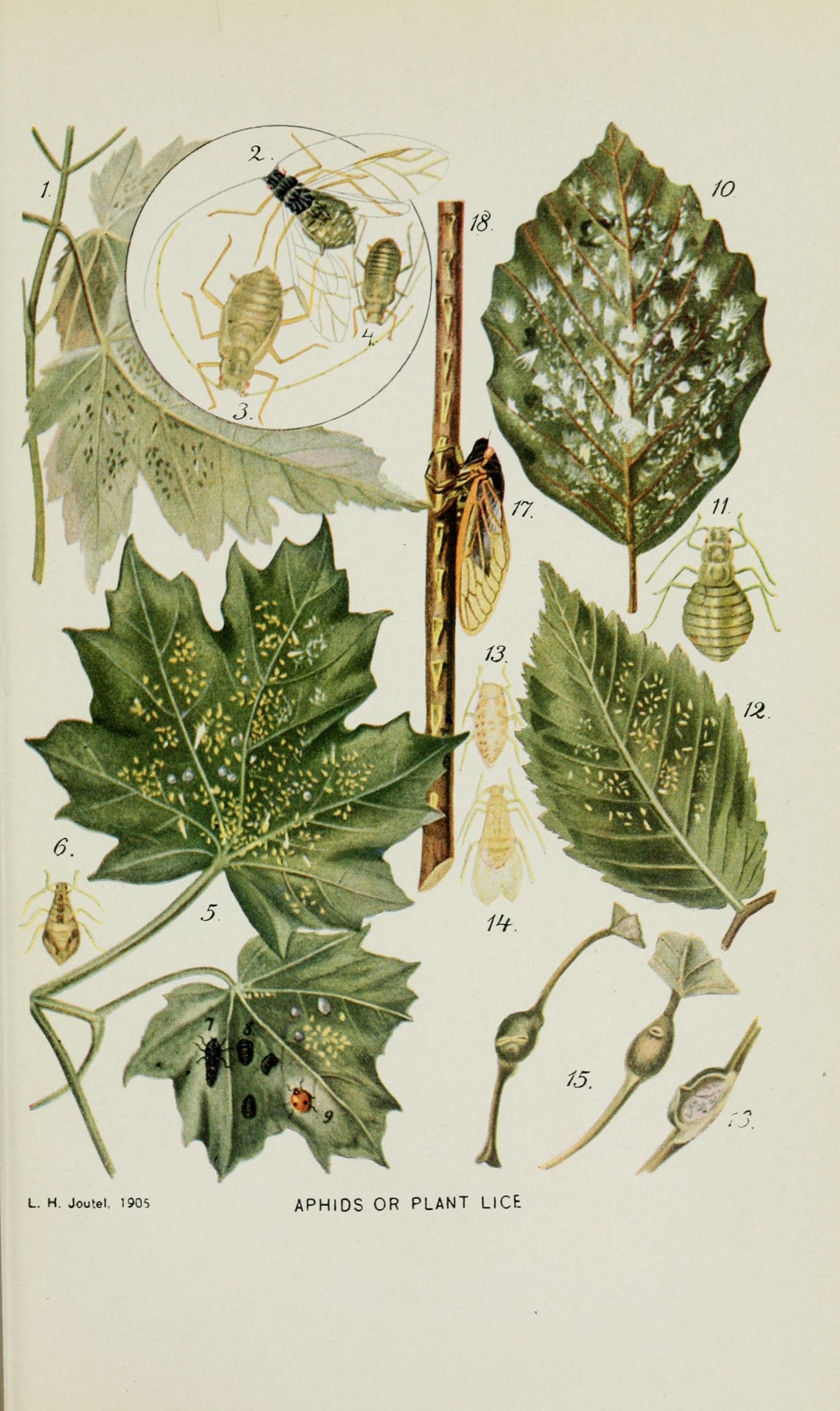
Grooves cut by ovideposting female (Magicicada). Pack, Charles L. Trees as Good Citizens. 1922. Art by L.H. Joutel (1905). Contributed in BHL from the University of Toronto – Earth Sciences Library (Noranda).
Though the egg laying is generally harmless to most trees, very young trees can be damaged. “Flagging” (where portions of the twigs die off leaving brown leaves to droop down) as well as the oviposition scars are positive signs of a future new generation of Brood X. The female’s ovipositor is spear-shaped, as described by Marlatt:
The ovipositor, or twig-piercing and egg-laying organ, of the female Cicada is also a very complex instrument. It issues from a groove, or fissure, on the underside of the abdomen, and at rest is nearly concealed except at the tip by the broad overlapping sides of the eighth dorsal segment … The inclosed ovipositor is a very tough, horny instrument, spear-shaped, and serrated at the extremity, and consists of three pieces …. (Marlatt 1898, 54)

Figure 25: The Ovipositor. Marlatt, C.L. The periodical cicada: an account of Cicada septendecim, its natural enemies and the means of preventing its injury: together with a summary of the distribution of the different broods. U.S. Department of Agriculture—Bulletin no. 14. 1898. Contributed in BHL from the U.S. Department of Agriculture, National Agricultural Library.

Oviposition scars (Magicicada). 12 June 2021, Arlington Virginia. Photo credit: Martin Kalfatovic.
Cicada Songs and Chorusing
A continual singing or scream was kept up by the males, from sunrise till evening, and so loud that in a calm morning the sound was heard a full mile. (Hildreth 1830, 48)
As the 2021 Brood X emergence ends, those living in the range will find their world strangely quiet. The loud singing and chorusing of the male cicada, which can be as loud as 90-100 decibels, will stay for a lifetime with those who have heard it.
… the true sound apparatus consists of two small ear-like or shell-like inflated drums situated on the sides of the basal segment of the abdomen. These drums are caused to vibrate by the action of powerful muscles, and the sound is variously modified by adjacent smaller disks — the so-called “mirrors” or sounding boards — and issues as the peculiar note of the species, which once heard is never likely to be forgotten, or if heard again, mistaken for that of some other insect. (Marlatt 1898, 55-56)

Fig. 27: The Musical Apparatus. Marlatt, C.L. The periodical cicada: an account of Cicada septendecim, its natural enemies and the means of preventing its injury: together with a summary of the distribution of the different broods. U.S. Department of Agriculture—Bulletin no. 14. 1898. Contributed in BHL from the U.S. Department of Agriculture, National Agricultural Library.
The songs of each of the species are distinctive. In my call with Dr. Gene Kritsky, he described the M. septendecim as a high note falling in descending pitch that sounds like “phaaaaa-raoh” (hence the common name of the species, Pharaoh Cicada). Kritsky details the cicada songs in his book: A chorus of M. septendecim has been compared to the sound of 1950s sci-fi movies. M. cassinii’s song is a series of clicks followed by a buzzing sound. M. septendecula’s call is isolated buzz-clicks and then staccato buzz-clicks (Kritsky 2021, 38).
You can find recordings of the various Magicicada species on iNaturalist: M. septendecim, M. cassinii, and M. septendecula.

Figure showing Magicicada sounds. Dybas, Henry. “Population explosion — 17-year locust style.” Bulletin. Field Museum of Natural History. 41.2 (February 1970). Contributed in BHL from the University Library, University of Illinois, Urbana-Champaign. CC-BY-NC-SA. Rights Holder: Chicago Field Museum.
Of course, for many, the songs and chorusing of the male cicadas is a rare treat. In 1970, during an emergence of Brood X in Princeton, NJ, Nobel-laureate Bob Dylan wrote of the cicada’s “sweet melody”:
And the locusts sang off in the distance
Yeah, the locusts sang such a sweet melody
Oh, the locusts sang off in the distance
Yeah, the locusts sang and they were singing for me (Bob Dylan, “Day of the Locusts”)
Near Threatened?
For those living in the areas where Brood X has appeared, it may seem perplexing that the three species of 17 Year Magicicada are listed as “near threatened” on the International Union for Conservation of Nature’s (IUCN) Red List of Threatened Species (see the IUCN Red List for Magicicada cassini, Magicicada septendecim, and Magicicada septendecula). The IUCN’s designation of “near threatened” is actually an improvement from its previous designation of “vulnerable.”
With multiple billions to trillions of individuals spread across a large geographic area, one may ask how these species could be at risk. However, we know from examples such as the Passenger Pigeon (Ectopistes migratorius) that species that seem vast in numbers and beyond threat can face numerous challenges from habitat loss and other human actions (see the BHL blog post, “From Billions to None: The Story of the Passenger Pigeon”).

A former tree filled lot. June 2021, Arlington Virginia. Photo credit: Martin Kalfatovic.
Even if the majority of Brood X (or other Magicicada broods) does not disappear anytime soon, there are areas where previous emergences are not happening, or not happening in large numbers. The best example of this is on Long Island where Brood X has had, practically speaking, no Magicicada sightings. Habitat loss is a major driver (both recently and historically) in Magicicada loss. The 13 and 17 year life cycle of the species, while perhaps beneficial in reducing predation, proves fatal when trees are cut down or the locations where nymphs would appear have been paved over.
Massospora cicadina
Though the 13 and 17 year cycles of Periodical Cicadas serves to keep them safe from opportunistic predators, there is one species of fungus that infects only Periodical Cicadas: Massospora cicadina.

M. septendecim infected with Massospora cicadina. 24 June 2021, Arlington Virginia. Photo credit: Martin Kalfatovic.
The M. cicadina fungus infection was first documented by Joseph Leidy in 1851:
In the spring of 1851, during the imago appearance of the seventeen-year locust, among myriads of the insect, several friends and myself found between 12 and 20 specimens, which, though living, had the posterior third of the abdominal contents converted into a dry, powdery, ochreous-yellow, compact mass of sporuloid bodies. The caudal appendages and posterior two or three abdominal rings covering the mass, were loose and easily detached, leaving the fungoid matter in the form of a cone, affixed by its base to the unaffected part of the abdomen of the insect. (Leidy 1853, 53)
In 1878, Charles Peck fully described and named the fungus, naming both the genus (Massospora) and species (Massospora cicadina):
Spore mass occupying the abdominal cavity, whitish or pale cream-color, at length exposed by the falling away of the terminal rings of the abdomen; spores subglobose or broadly elliptical, granular within, sometimes containing one to three unequal nucleoli or oil globules, .00065′ — .00085′ in diameter. (Peck 1879, 44)
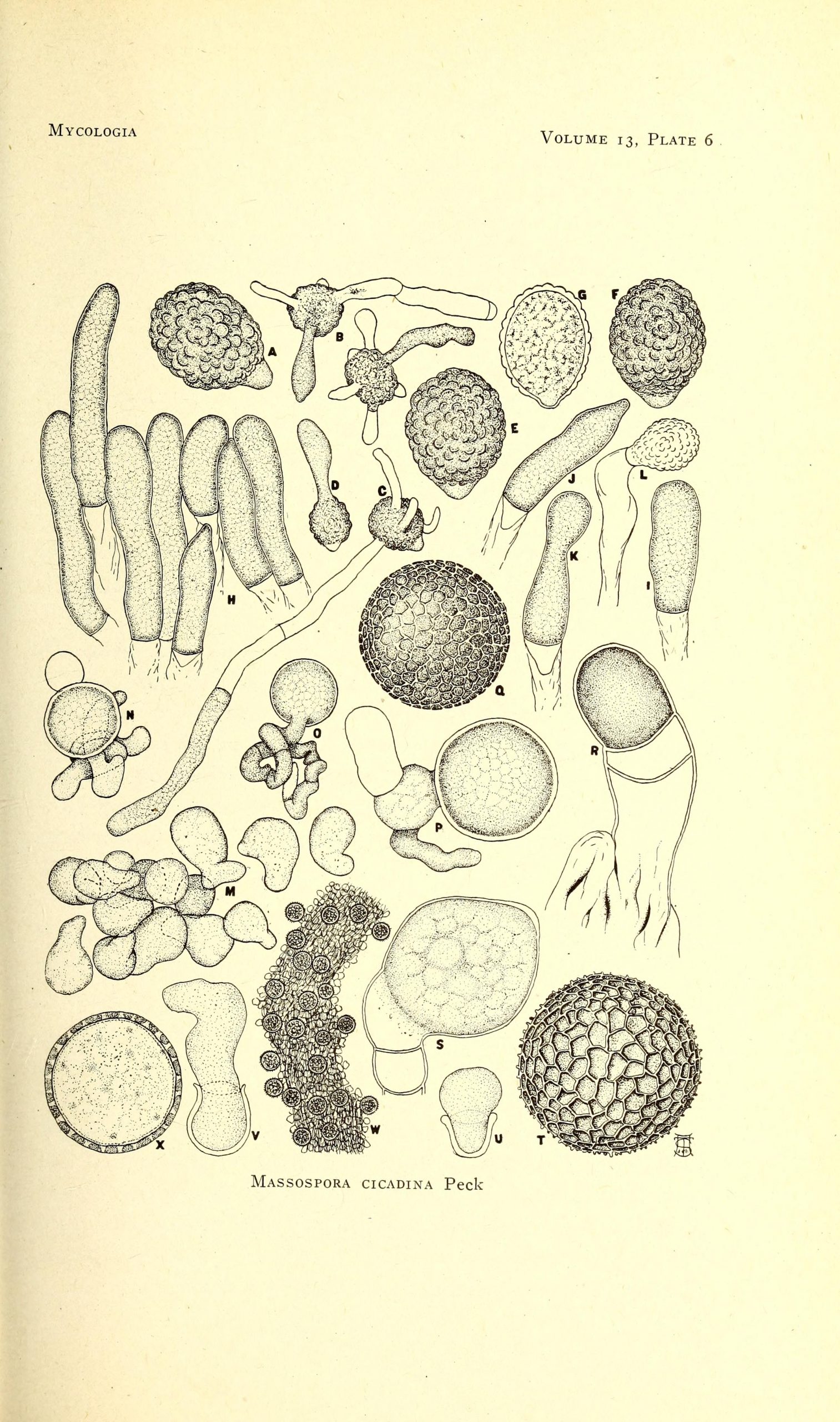
Massospora cicadina Peck. Speare, A. T. 1921. “Massospora cicadina Peck: A Fungous Parasite of the Periodical Cicada.” Mycologia. 13 (2): 72–82. Contributed in BHL from Smithsonian Libraries and Archives.
Recent research by Boyce, et al. provides an extended genetic analysis for M. cicadina and explores the chemical basis for behavioral changes caused by M. cicadina:
Several studies have reported hypersexual behaviors in Massospora-infected cicadas, where male cicadas, in addition to typical mating behavior, also attract copulation attempts from conspecific males (5,7; table S1). This “extended phenotype” of Massospora hijacks cicadas, turning them into efficient vectors for conidial transmission. (Boyce, et al., 2018, 3)
Brood X: Cicada Safari and iNaturalist
Brood X is appearing at a time of great interest by people all around the world in helping create research quality data for scientists. The Cicada Safari app logged nearly 20,000 images a day during peak observations. In a conversation with Dr. Kritsky of Mount St. Joseph University, he noted that Cicada Safari is on track to document nearly 500,000 observations of Magicida this year. As I discussed with Kritsky, the sheer bulk of this data will be invaluable to researchers for years to come.

Dr. Gene Kritsky. Image credit: Martin Kalfatovic.
Another important citizen science project is iNaturalist. Contributors to iNaturalist are also providing invaluate data on Brood X. Contributors are asked to provide additional species information (when known) and other iNaturalist participants verify or confirm both species as well as other data points on the observations. In a conversation with Carrie Seltzer (Stakeholder Engagement Strategist for iNaturalist), she noted:
More than 4,400 people across the Eastern United States submitted over 19,000 Magicicada observations this year to iNaturalist. We look forward to learning what insights emerge from these records, and how they complement data from more targeted apps like Cicada Safari.
I spoke with a few of the top iNaturalist observers/identifiers of Magicicada for their experiences with Brood X this year.
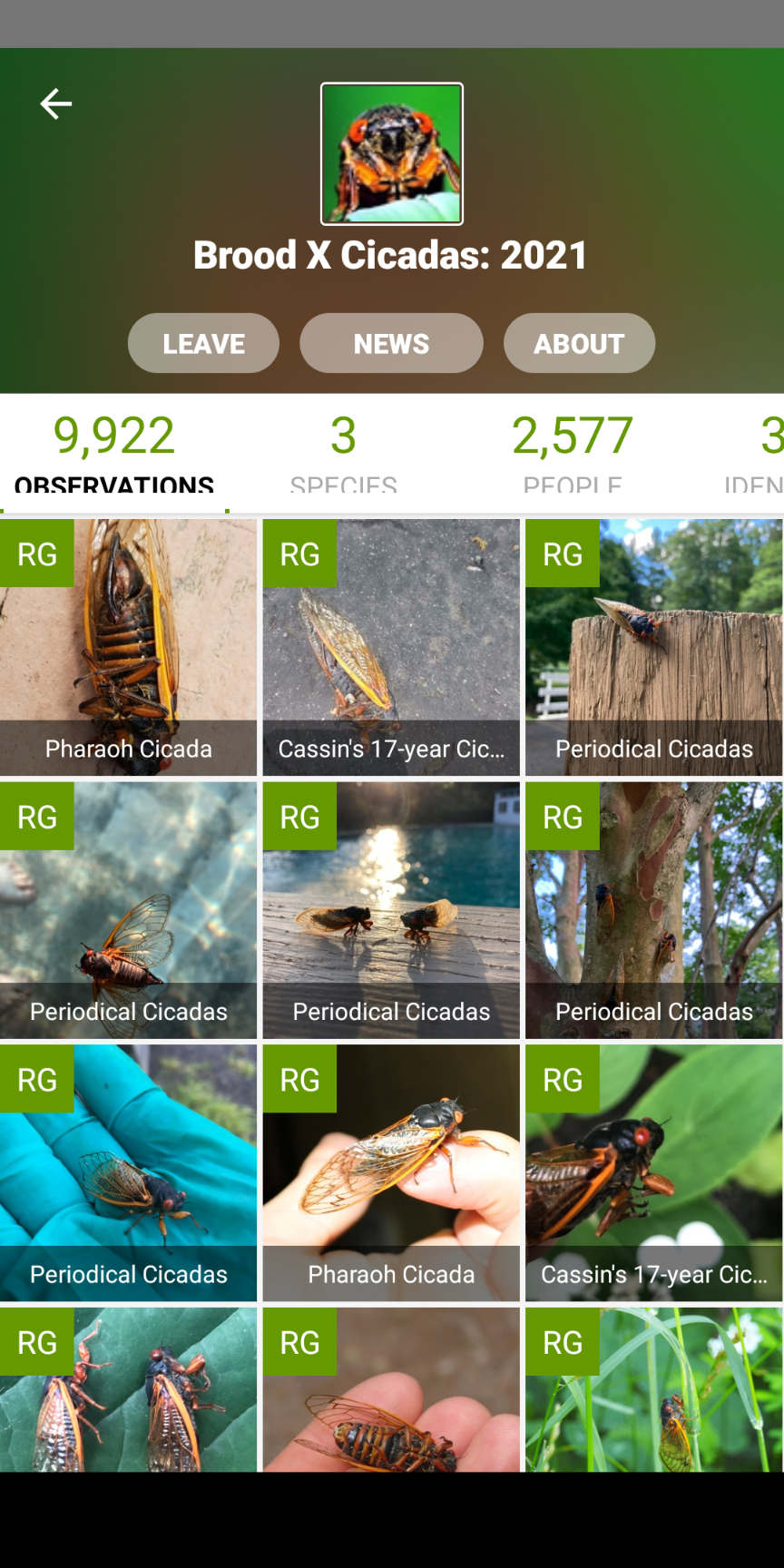
iNaturalist Screenshot.
Roshan Vignarajah (roshan2010) is one of the top observers/identifiers in iNaturalist. This is Roshan’s first Magicicada emergence. He shared with me:
I have been interested in insects for most of my life, and I have been waiting for the emergence since the Brood X stragglers emerged in 2017. Once I learned about the 3 species, I was hooked. I love observing larger insects which makes cicadas (specifically Magicicada) the perfect subject. I also have an interest in Lepidoptera (especially moths).
Vignarajah has also spotted four of the blue-eyed Magicicada (see examples of M. cassinii and M. septendecim). He will miss many things when Brood X’s emergence fades, “especially the constant drone of the choruses and having a constant stream of cicadas to enjoy and photograph.”
Adrienne van den Beemt (mmmmbugs) is a science teacher and naturalist in the Washington, DC area. This is her third Magicicada emergence. She noted:
I have loved watching this emergence. It has been hard sometimes to teach classes outside when the cicadas are so loud, and some students have a genuine fear which makes it difficult for them. As a science teacher and naturalist, I am always interested in what’s going on in the natural world. One thing I appreciate about iNaturalist is that it provides a way for the public to interact with scientists and naturalists. I love being able to help people identify a plant or a bug- and then to be able to continue the conversation if they have further questions, or if another user suggests a different identification.
Zachary Dankowicz (zdanko) is the top observer/identifier of M. septendecula. They commented:
This is my first experience, I’d only ever heard of the emergences from older family members, and it got me quite excited! I started just photographing them and trying to get all of the species, and as I got more involved in observing them, I learned a lot through other people and outside resources like cicadamania.com about how to identify them. One thing led to another, and now I’m the top observer and identifier for Magicicada septendecula, my favorite, and the most elusive, species of the 17-year cicadas! I’ve observed over 400 M. septendecim, so that’s definitely my top observed species, but it’s somewhat of a phase. My primarily observed taxon is a mix of Dipterans and Cicadellids, as they tend to be the ones that catch my eye most often.
I’ll miss going to my favorite septendecula spot and picking up cicadas one by one to check the abdomen. One thing I found quite interesting was that in the very beginning of the emergence, there were barely any septendecula in the places that I checked. All of the sudden, one day I found 5, and the next day 4, and the day after that 4, etc.
Jessee J. Smith (weecorbie) is another top observer/identifier and manages the Brood X Cicadas: 2021 iNaturalist project page. She told me:
My first experience with Magicicada in 1987 made a deep impression. I took entomology in college in spite of the fact that I was an English/art major at the time, and it made me swap my English major for one in natural science. I began working with Magicicada in a research capacity with Brood III in 1997, and I’ve helped out with field surveys and publications ever since. It’s a good thing that I’m very fond of cicadas, because I’m married to Gene Kritsky, and it would be impossible to avoid them for that reason alone. We’ve had a lot of adventures together in the course of our cicada surveys.
Among the highlights for Smith this year were “how many cicadas I saw with aberrant coloration; I found quite a few cassini with piebald orange patches, or with entirely orange abdomens.”
When the 2021 emergence ends, Smith won’t just miss the sight of all those Magicicada:
I’ll miss the chorusing, which peaked around our house at 90 dB (and that’s really loud), but which I especially enjoy in the evening when the cicadas are winding down for the night. There’s something restful about the occasional muttering rasps of cassinii in the gloaming, combining with the steady ticking of a few septendecula here and there.
At the time of writing (1 July 2021), iNaturalist had tallied the following:
- 21,694: Magicicada (genus)
- 8,710: M. septendecim
- 3,104: M. cassinii
- 509: M. septendecula
As a final note, Seltzer commented, “There are interesting opportunities to infer absence of cicadas from areas that had other iNaturalist observations during the Brood X emergence, but no cicada observations. Although imperfect, it may help control for (or at least highlight) areas with less observer effort.”
Magicicada 2038
Over the last weeks of June and into July, the last of the adult Magicicada will complete their breeding cycle and egg laying. The eggs deposited in tree branches will hatch and the larvae will drop to the ground, burrowing down to attach themselves to the tree roots and settle down for another 17 years.
The world that Brood X (2021) emerged into changed significantly from 2004 when they dug into the ground. The information gathered this year will inform the study for when they next emerge. What our shared world will look like in 2038 is something both humans and Magicicada will find out together.

Magicicada eggs. 28 June 2021, Arlington Virginia. Photo credit: Martin Kalfatovic.
My Observation Highlights of Brood X
- First adult observation (likely Magicicada septendecim): 10 May 2021
- First confirmed observation (Magicicada septendecim): 14 May 2021
- First observation of teneral stage (Magicicada, likely M. septendecim): 15 May 2021
- First Observation (Magicicada cassinii): 20 May 2021
- First Observation (Massospora cicadina): 24 May 2021
- First Observation, mating (Magicicada septendecim): 26 May 2021
- First Observation (Magicicada septendecula): 27 May 2021
- First Observation, ovipositing (Magicicada septendecim & Magicicada cassinii): 5 June 2021
- Last Observation of living Magicicada (M. cassinii): 16 June 2021
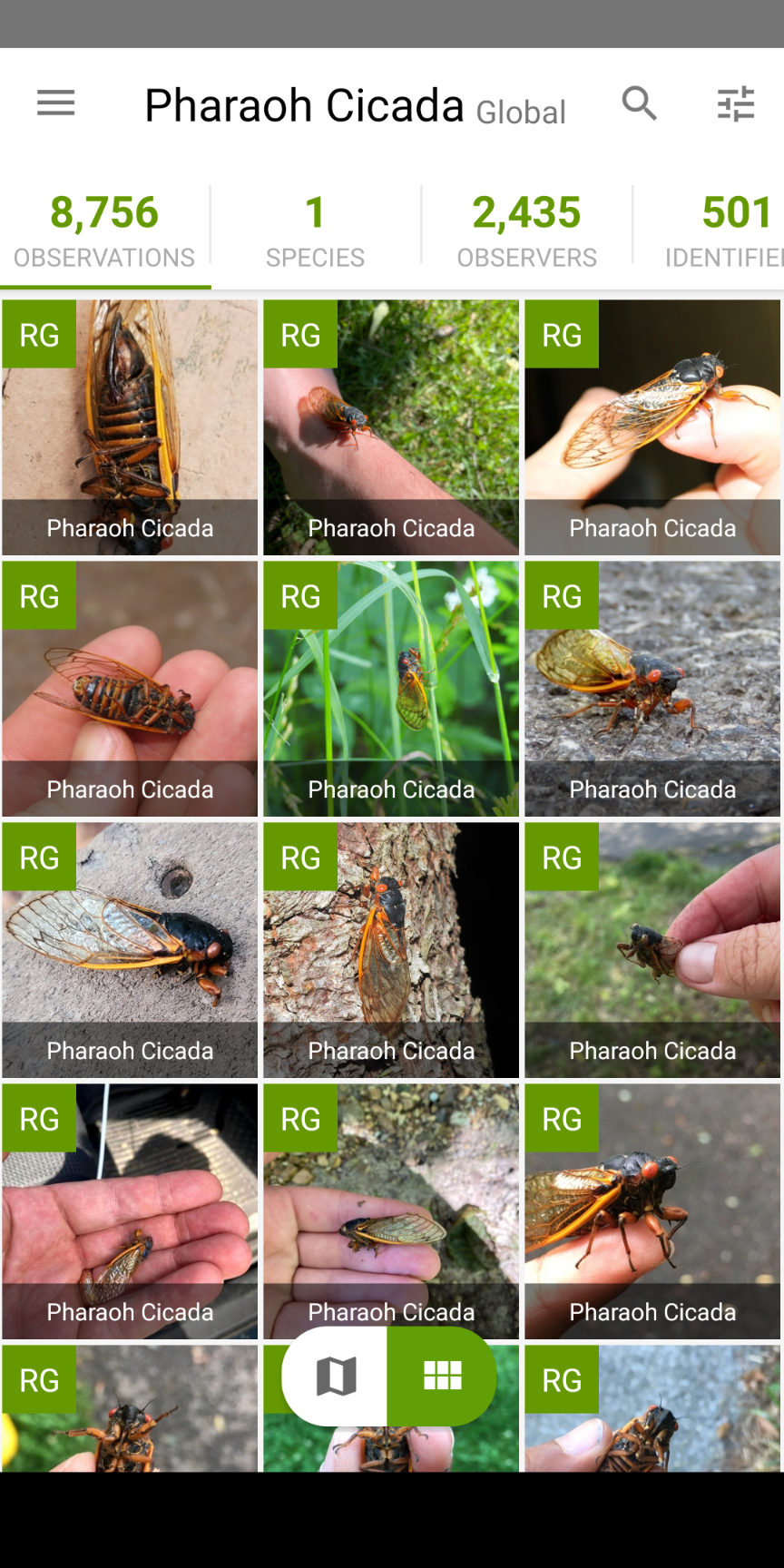
Screenshot: iNaturalist.
References and Additional Suggested Reading
Boyce, Greg, et al. 24 July 2018. Discovery of psychoactive plant and mushroom alkaloids in ancient fungal cicada pathogens. bioRxiv. Preprint doi: https://doi.org/10.1101/375105
Dybas, Henry. 1970. Population explosion — 17-year locust style. Bulletin (Field Museum of Natural History) 41(1): 11-13. https://www.biodiversitylibrary.org/page/2890663
Hildreth, S.P. 1830. Notices and Observations on the American Cidada, or Locust. The American Journal of Science and Arts. 18: 47-50. https://www.biodiversitylibrary.org/page/30953560
Kritsky, Gene. 2021. Periodical Cicadas: The Brood X Edition. Ohio Biological Survey. http://www.worldcat.org/oclc/1246784386
Leidy, Joseph. 1853. Upon Pseudo-Entophyta, etc. In: Flora and Fauna within Living Animals. Smithsonian Contributions to Knowledge. 5: 50-54. https://www.biodiversitylibrary.org/page/9049946
Peck, Charles H. 1879. Report of the Botanist. Massopora, gen. nov. 31st Annual report on the New York State Museum of Natural History. 31:44. https://www.biodiversitylibrary.org/page/35614048
Speare, A. T. 1921. “Massospora cicadina Peck: A Fungous Parasite of the Periodical Cicada”. Mycologia. 13(2): 72–82. https://www.biodiversitylibrary.org/page/46097338




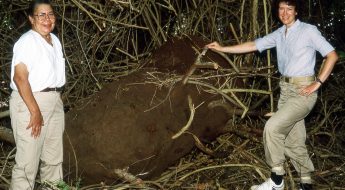
Leave a Comment